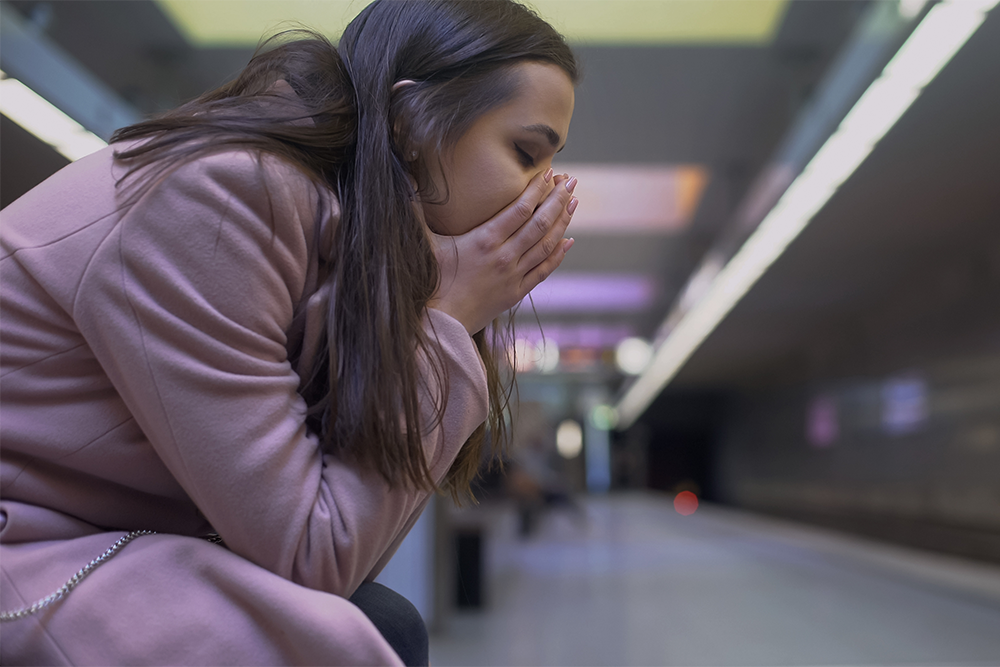Most people experience anxiety at some point in their life. It’s normal for an individual to become nervous before an interview or a date; however, what happens when this anxiety does not subside? Does this mean that you have or are developing an anxiety disorder? According to the National Institute of Mental Health, there are various types of anxiety disorders, including generalized anxiety disorder or GAD, panic disorder, and phobias related to anxiety disorders. Each disorder embodies one common aspect: when overwhelming feelings of worry or fear interfere with your daily life.
Over time during a particularly trying time, you might have developed traits and behaviors that exhibit an anxiety disorder and might be wondering if it is severe enough to seek help. Exploring some signs and symptoms presented by an anxiety disorder can help you determine when and if you need to seek help.
Excessive Worry
Occasional worry is a typical response to specific situations and stressors happening in your life. Worry might present itself at work or when you or a family member has become sick. However, it becomes excessive when your feelings of worry do not go away. Your worry likely started as reasonable; however, if you noticed an increase of worry and fear over specific events that generally should not worry you, then you are showing signs of excessive worry.
According to the NIMH, those with generalized anxiety disorder (GAD) worry about typical things, including health, money, and family, though the worry is more significant. Therefore, you continue to worry about these things even when there is no apparent reason to worry. Such anxiety is often hard to control and makes it difficult to focus on daily tasks. If you wonder how much your anxiety is interfering, try to track your daily thoughts and behaviors either with a journal or using mindfulness. You can then look for clues and discover whether anxiety has taken the “driver’s seat” and influenced your day.
Irrational Fears
Some anxiety is not generalized at all; on the contrary, it attaches to a specific situation or thing, such as flying, animals, or crowds. If your anxiety becomes overwhelming, disruptive, and out of proportion to the risk involved, this is a telltale sign that you might have developed a particular phobia. While phobias can be debilitating, they’re not always obvious. Phobias can work much like programs and apps running in the background of smart devices – while they are not in the forefront, they are continually operating and draining your emotional capacity
You might go years without encountering or addressing a phobia. However, all it takes is something to trigger it, and you discover how severe your phobia is. For example, if you’re afraid of spiders and go years without encountering one, then one day you have to clean out the basement or shed and realize you cannot do this because of the phobia of spiders. Likewise, after going through a pandemic in which you spent time adjusting to new health and safety protocols, you might have developed a fear of going outside. While this fear might have worked to help keep you safe initially, it might now have become coded within you to fear going outside at any point – even years after the pandemic. When fear is irrational or unfounded, this is a clear sign that it is time to get professional help.
Panic Attacks
Panic attacks are gripping feelings of fear and helplessness that come on strong and last for a few minutes. During this time, you might experience scary physical symptoms such as difficulty breathing, racing heart, tingling hands, and dizziness. What happens during panic attacks is a fight-or-flight response. When you are in a heightened panic, your brain sends increased levels of cortisol and adrenaline throughout your body which creates these physical symptoms. While not everyone who has a panic attack has an anxiety disorder, repeated attacks should be a cause of concern and treated by a professional. If untreated, you can live in worry, always wondering when the next attack will occur and even avoiding people and places where you think an attack might happen.
While a panic attack might only last a few minutes, it can take days for your nervous system to recover, causing you to feel agitated or on edge. At the same time, your hormones continue to balance out. Understand that you do not need to have multiple panic attacks before seeking professional help. Seeking help after one panic attack can help you address the root cause of your panic and overcome it much sooner.
Compulsive Behaviors
You might think that you can avoid anxiety by controlling everything that influences your safety and well-being. You may even try to manage things and people you have no control over. Likewise, when you experience compulsive behavior, your obsessiveness and intrusive thoughts can overtake your mental and physical well-being, such as telling yourself that you will be all right over and over, or washing your hands and straightening up items repeatedly.
Obsessive thinking and compulsive behaviors become an anxiety disorder when the need to complete behaviors or “rituals” begins to drive your life. You can work to determine how severe your compulsive behaviors are by tracking your daily habits and routines. You might also utilize the practice of mindfulness or a journal to do so. Seeing your behavior on paper can give you all the motivation you need to seek help.
Anxiety disorders can damage the quality of your lifestyle. They create feelings and thoughts of fear, doubt, and uncertainty, and such feelings and thoughts tend to magnify when left untreated. At DiscoveryMD, we believe that the sooner you act on getting help, the faster you can diagnose and overcome your anxiety. To find out more information, contact us today.
